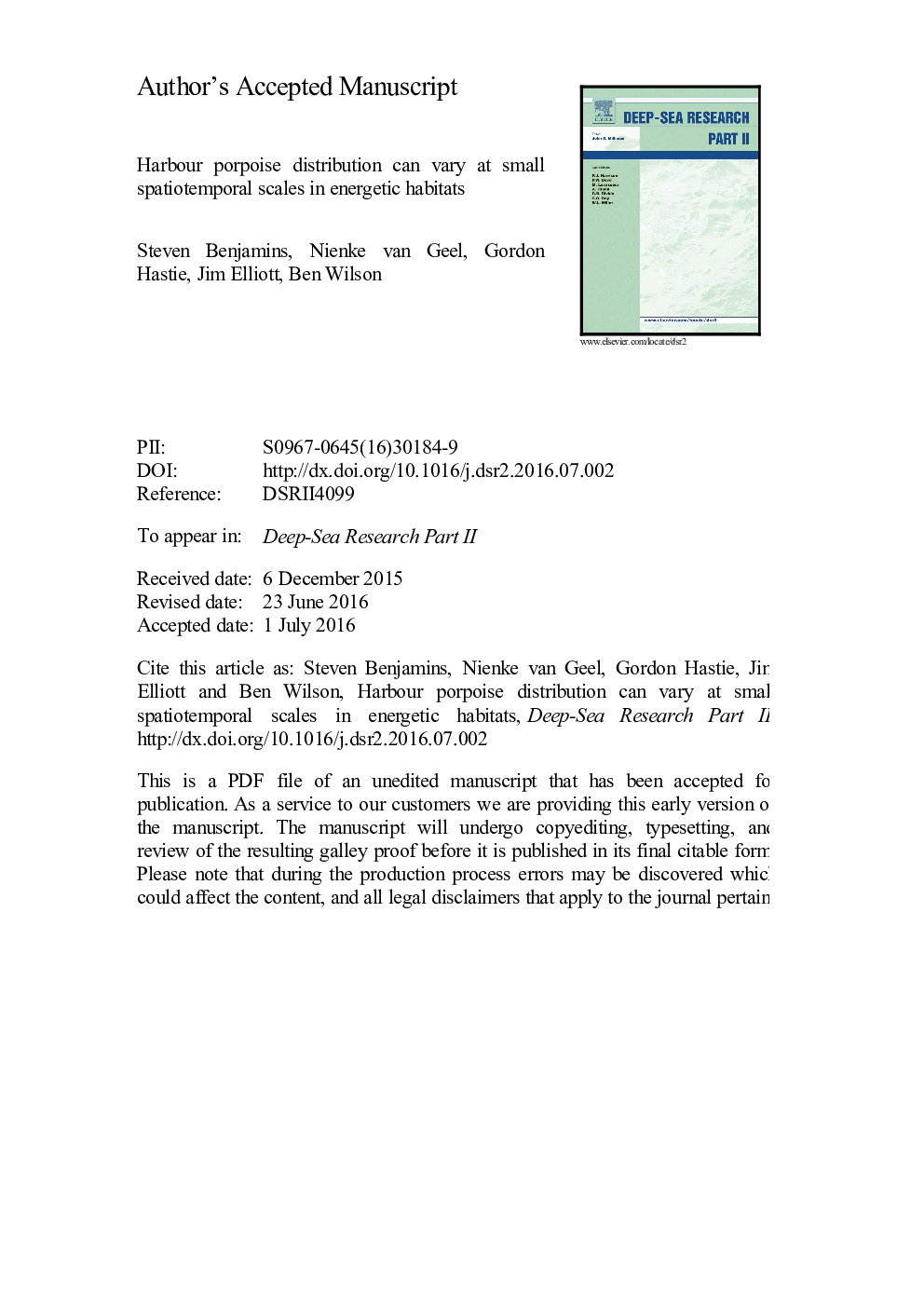| Article ID | Journal | Published Year | Pages | File Type |
|---|---|---|---|---|
| 5764931 | Deep Sea Research Part II: Topical Studies in Oceanography | 2017 | 27 Pages |
Abstract
These results indicate that, in energetically active and heterogeneous areas, porpoises can display significant spatiotemporal variability in site use at scales of hundreds of metres and hours. Such variability will not be identified when using solitary moored PAM detectors (a common practice for site-based cetacean monitoring), but may be highly relevant for site-based impact assessments of MRED and other coastal developments. PAM arrays encompassing several detectors spread across a site therefore appear to be a more appropriate tool to study site-specific cetacean use of spatiotemporally heterogeneous habitat and assess the potential impacts of coastal and nearshore developments at small scales.
Related Topics
Physical Sciences and Engineering
Earth and Planetary Sciences
Geology
Authors
Steven Benjamins, Nienke van Geel, Gordon Hastie, Jim Elliott, Ben Wilson,
